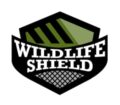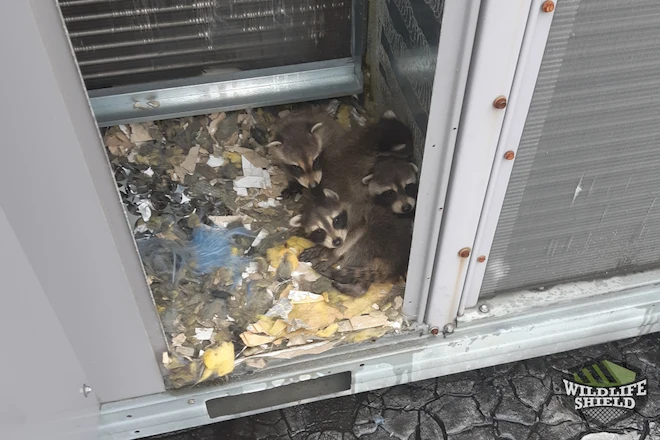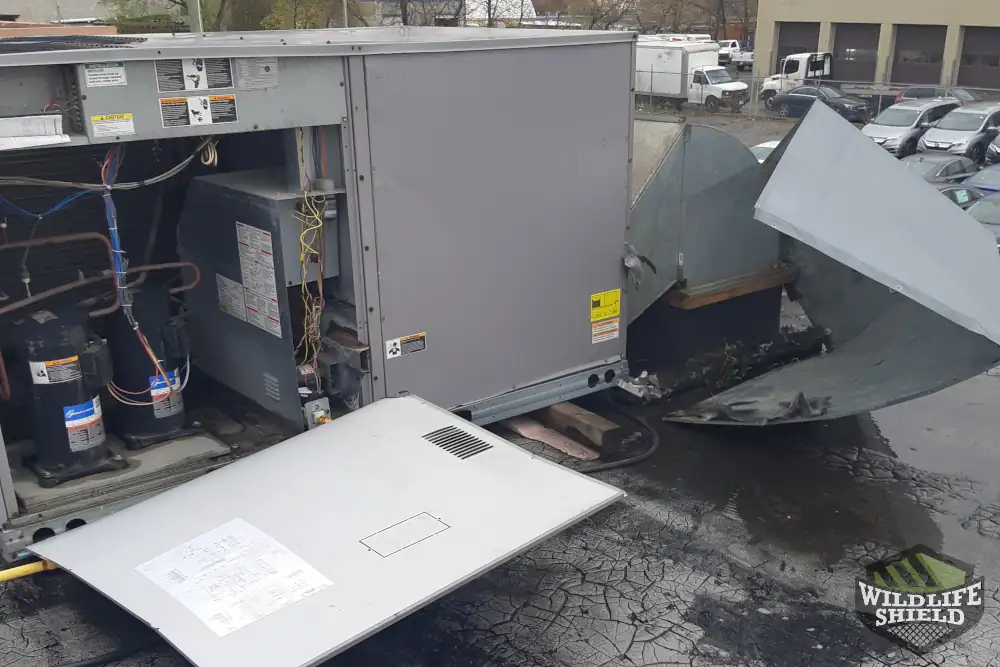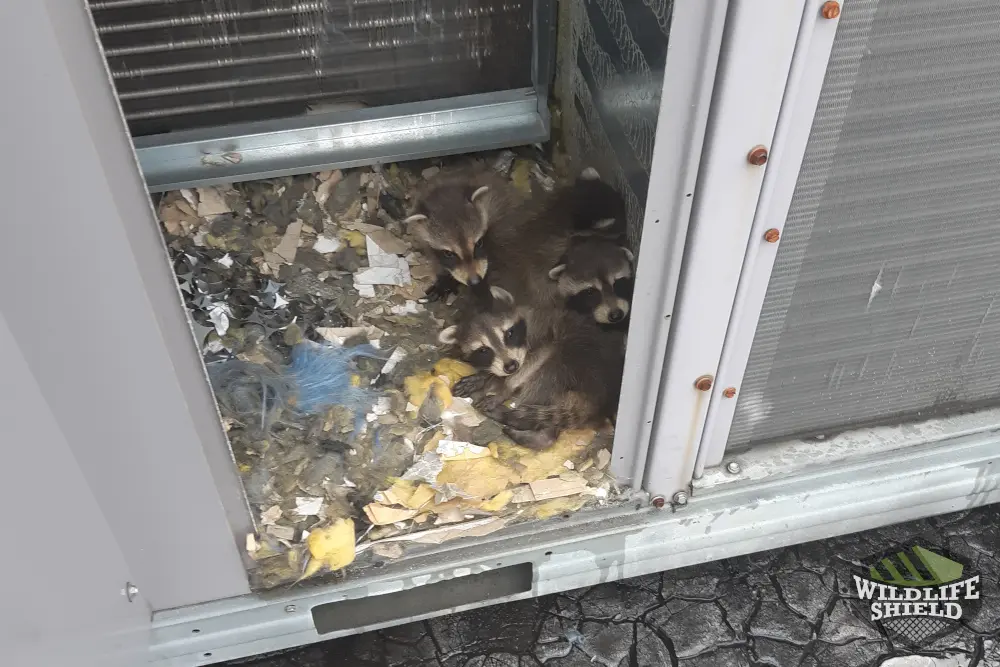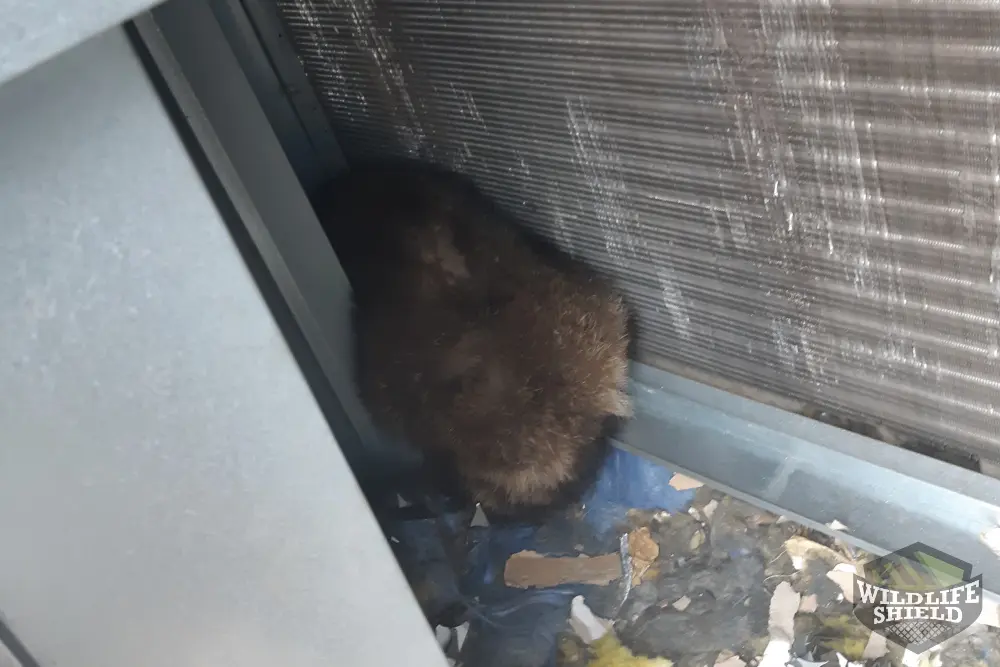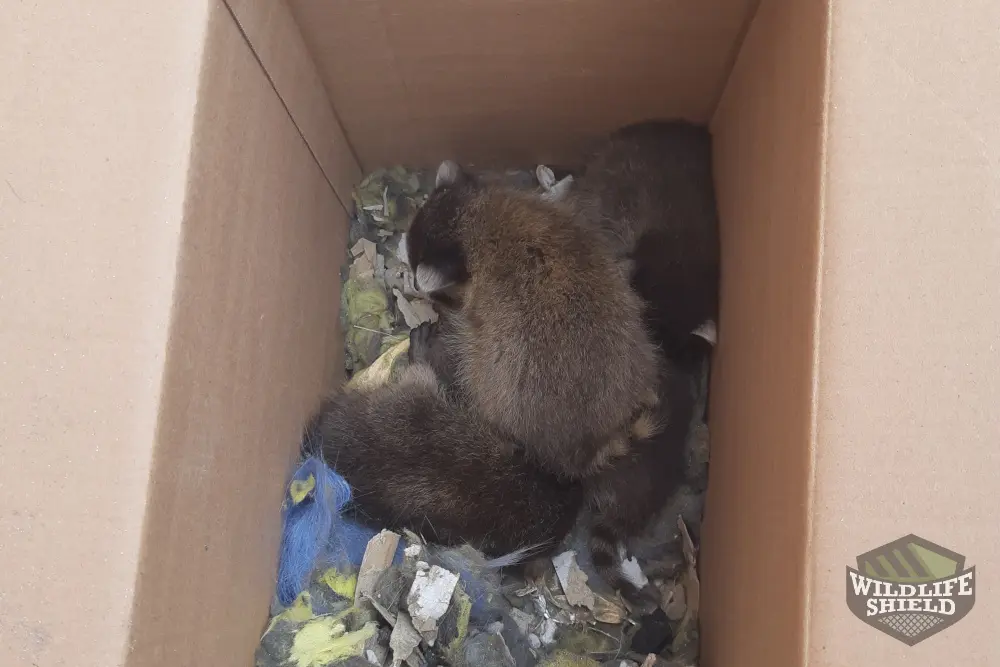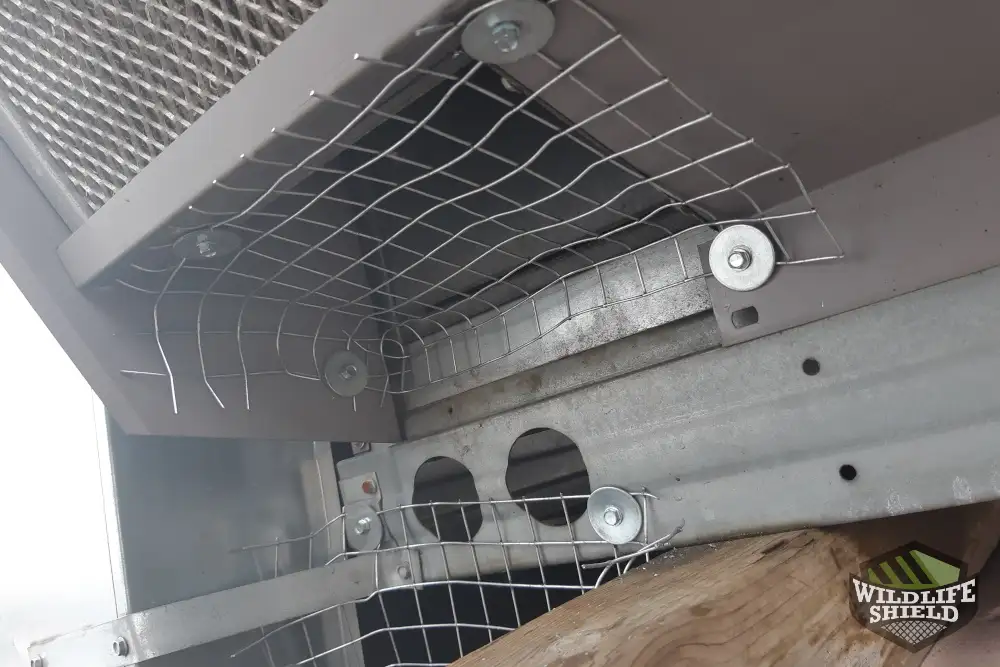The following case study recounts a mother and baby raccoon removal job in North York. It was spring, and a family of raccoons were found nesting on the roof of a church. To remove them safely, a technician thoroughly inspected the problem and evicted the animals with care. The infested area was then cleaned and excluded so that this would not happen again.
Inspection
No matter the situation, the technicians at Raccoon Control perform complete inspections so they can provide the best service possible. Gaining a proper understanding of the problem allows us to address every factor contributing to the infestation and implement solutions that last. In this case, a technician inspected the roof because members of the church were witnessing raccoon activity there.
Church staff had seen a raccoon climb up on top of the roof and could sometimes hear noises coming from the ventilation. These are common signs of a raccoon problem. Raccoons are noisy animals that like to nest in attics and other raised structures. Females commonly break into these areas in late winter and spring to give birth to their cubs and raise them.
During the inspection, the technician found exactly where the raccoon was nesting. She was found hiding in the HVAC system on the roof of the church along with her four cubs. The structure provided her with a safe place, hidden away from predators and inclement weather. The problem with this however is that raccoons will cause a lot of damage to the areas they inhabit. With time, this family of raccoons would likely tear at the wires and components of the HVAC system and contaminate it with feces, which will then dirty the air in the church and the water dripping off the roof. The raccoons could also make their way inside the building from the HVAC unit, so they had to be removed as soon as possible.
As such, the technician on site recommended that the raccoons be removed immediately. The HVAC system would then be cleaned of animal matter and protected with wire mesh so that the raccoons would not return. The property manager agreed to go ahead with the work and the technician got started.
Removal and Exclusion
Baby raccoons are removed by hand. Here, the technician carefully removed the cubs while wearing protective equipment and placed them in a box full of insulation that would keep them warm. The box was placed near the HVAC system so the mother could collect them later and move them to a new location. This does not harm the raccoons. Raccoons know their neighbourhoods very well and often have more than one den at a time.
Next, the technician evicted the female by tapping on the HVAC system. The sound was alarming enough that it made her leave on her own. In some cases, females become aggressive and need to be snared. Professionals are prepared for this and have all the necessary training and equipment. The female would later come to collect her babies from the box.
Once the animals were removed, the technician on site cleaned the interior of the HVAC unit with a professional fogger. This removed all the harmful pathogens and odours the animals left behind. The gaps beneath the HVAC system that the female used to get inside were then sealed off with a galvanized steel mesh, a material strong enough to withstand the chewing and tearing of animals.
Conclusion
Raccoons are resourceful animals that have adapted to their new, urban environments. The female raccoon in this case had found a way inside an HVAC unit where she could make herself at home and raise her cubs. While raccoons may seem harmless, they can unfortunately do a lot of damage and risk making you very sick. Removing the raccoons from this roof and disinfecting the area would keep the air in the church clean and prevent any infestations from happening inside. The raccoons were soon reunited once the exclusion work was done and likely found another home somewhere else, out of anyone’s way.
